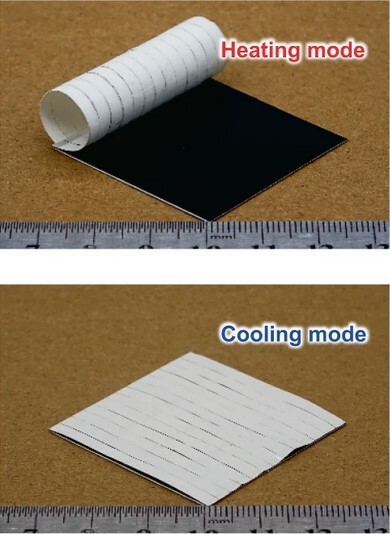Radiative cooling: smart materials to switch from heating to cooling
Researchers have developed a radiative thermal management device, composed of several layers of reflective/absorbent materials, capable of switching between heating and cooling modes.
Radiative thermal management is regarded as a promising technology for heating and cooling without external energy consumption. Radiative cooling systems work by absorbing thermal radiation (i.e. heat) from a building and then emitting it to the sky (or outer space). One of the challenges with radiative thermal management materials is to maximise the use of both the inexhaustible radiative heat source (i.e., the sun, ~5800 K) and the cool source (i.e., outer space, ~3 K) in nature.
According to a study published in Nature in August 2022, researchers at Nankai University in China have designed a dual-mode radiative thermal management device which is able to switch between heating and cooling modes depending on the ambient temperature.[1]
Design of the layers for heating and cooling modes
The device consists of three functional layers: a radiative cooling layer, a temperature-sensitive actuating layer and a solar heating layer. The solar heating layer is composed of an aluminium plate coated with black chromium oxide nanoparticles. The functional layer for radiative cooling consists of a flexible polymer that encapsulates nanoparticles of titanium oxide (TiO2), which is a white pigment. The heating layer is black to absorb sunlight, while the cooling layer is a glossy white to reflect sunlight.

Automatic switching mechanism between heating and cooling modes
Between the heating and cooling layers, there is a reversible shape memory layer that serves as a temperature-triggered intelligent auto-switch.
The researchers synthesised a temperature sensitive polymer and adhered it to the cooling layer. When the temperature falls, the polymer contracts, peeling the cooling layer away for solar heating to begin. As temperatures rise, the polymer relaxes back into a resting position for radiative cooling to occur. Additionally, the shape memory property of the polymer ensures a smooth transition between heating and cooling without affecting their conversion efficiencies of over 90%.
Watch a short video clip demonstrating the switching mechanism:
Practical application and energy saving potential
The device can achieve an average heating power of about 860 W m−2 (corresponding to average solar-thermal conversion efficiency of about 91%) and an average cooling power of about 126 W m−2. Using as an example the Chinese city of Tianjin, which has a continental-monsoon climate, the researchers calculated that the year-round accumulated energy saving can exceed 2.9 GJ m−2. They also modelled energy savings in heating and cooling modes for several cities worldwide.
According to its developers, this dual-mode radiative thermal management device could be suitable for open areas such as the roofs of large buildings. At this stage, their top priority is to further improve the thermal management performance of their device as well as its weather resistance in real life.[1] Indeed, the effect of humidity, rain and wind on the chemical stability and longevity of the material must be considered before it can be used to retrofit existing buildings.[2]
For more information on passive cooling technologies (including radiative cooling),
download the IIR 47th Informatory Note
Sources
[1] Zhang, Q., Lv, Y., Wang, Y. et al. Temperature-dependent dual-mode thermal management device with net zero energy for year-round energy saving. Nat Commun 13, 4874 (2022). https://doi.org/10.1038/s41467-022-32528-1
[2] UCL Science Magazine. (2022) Heating and Cooling our Homes: As Simple as Black and White? https://www.uclsciencemagazine.com/article-c1/
